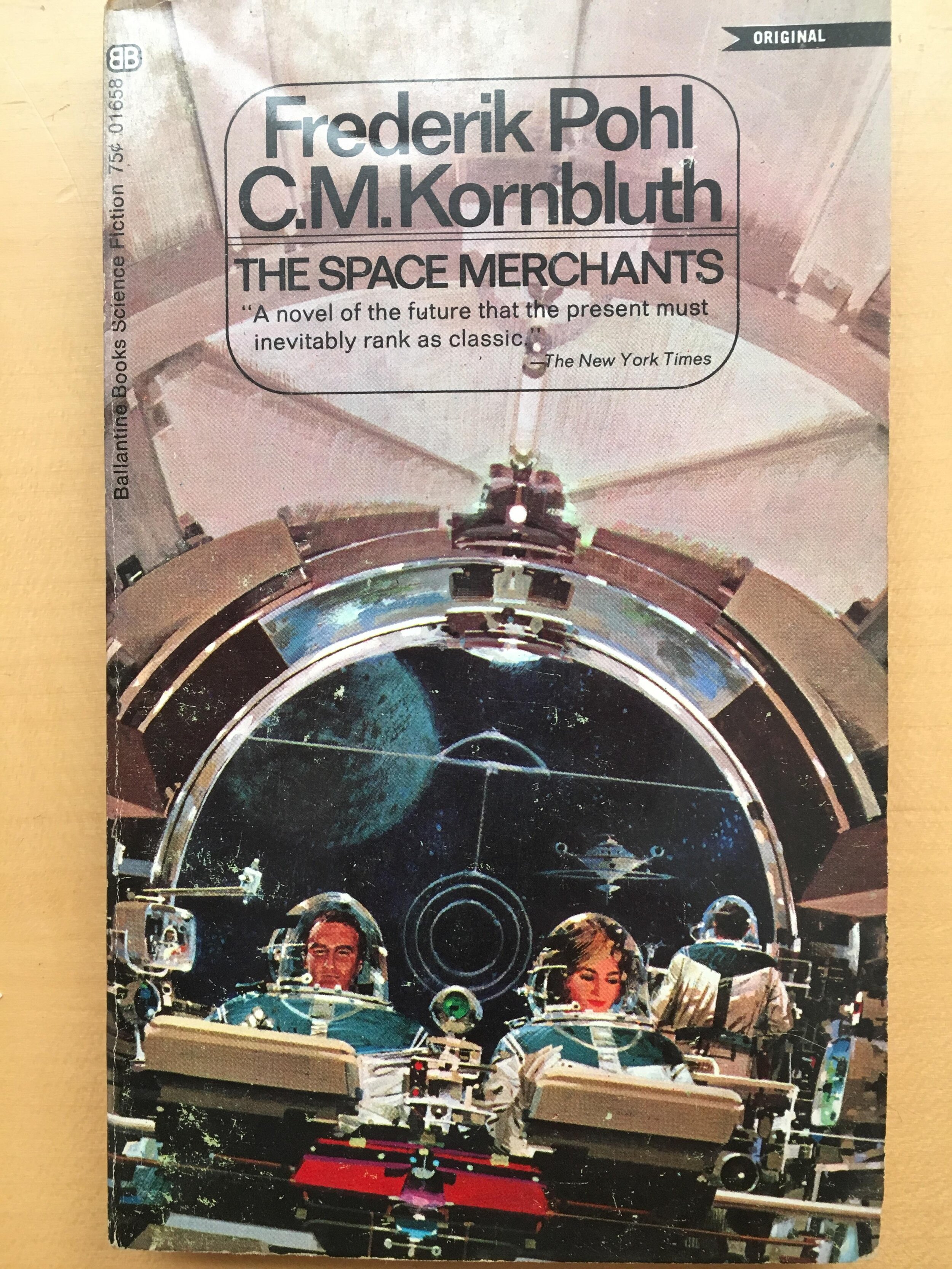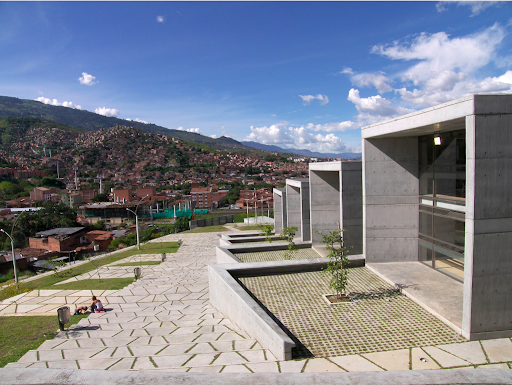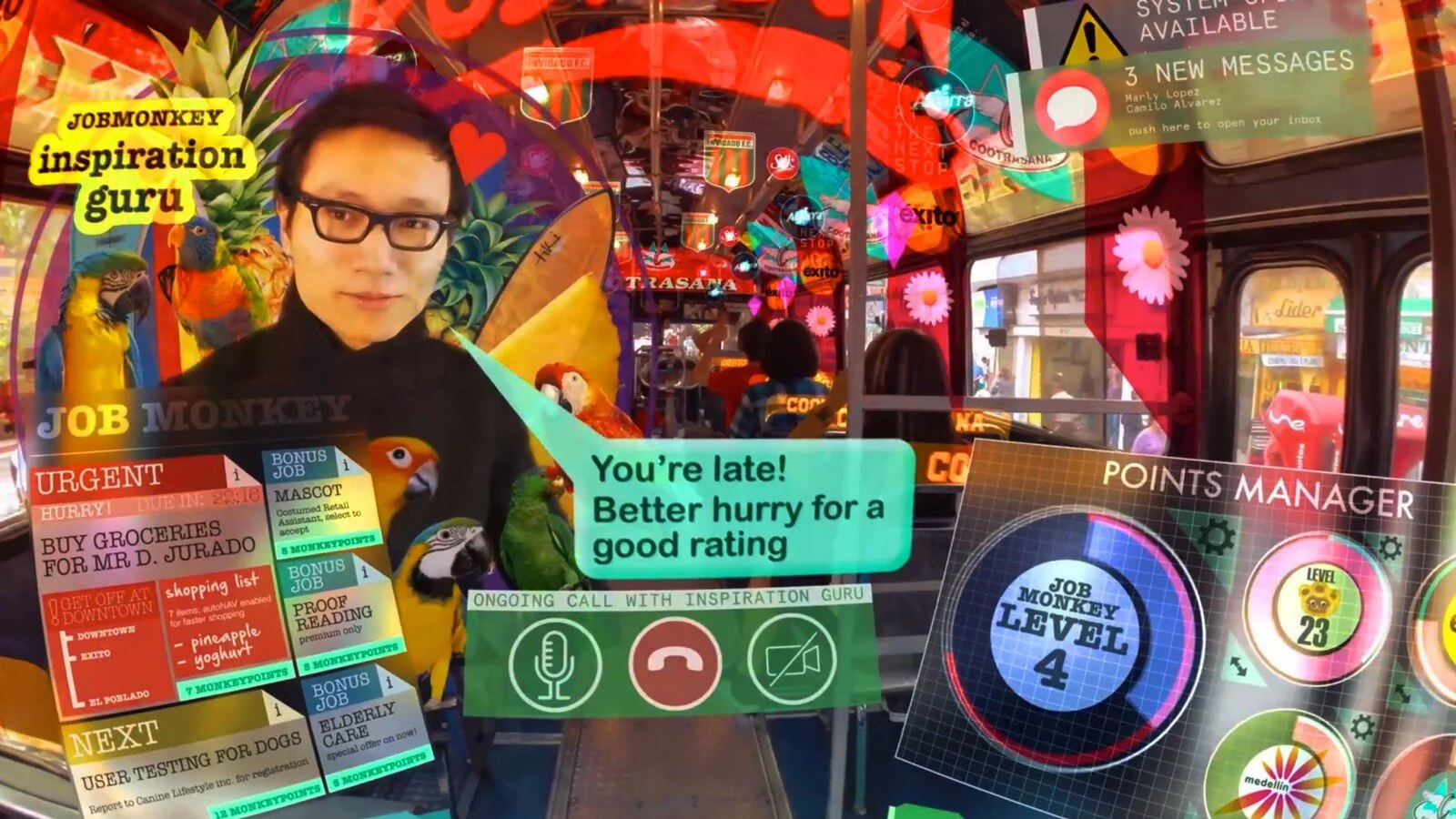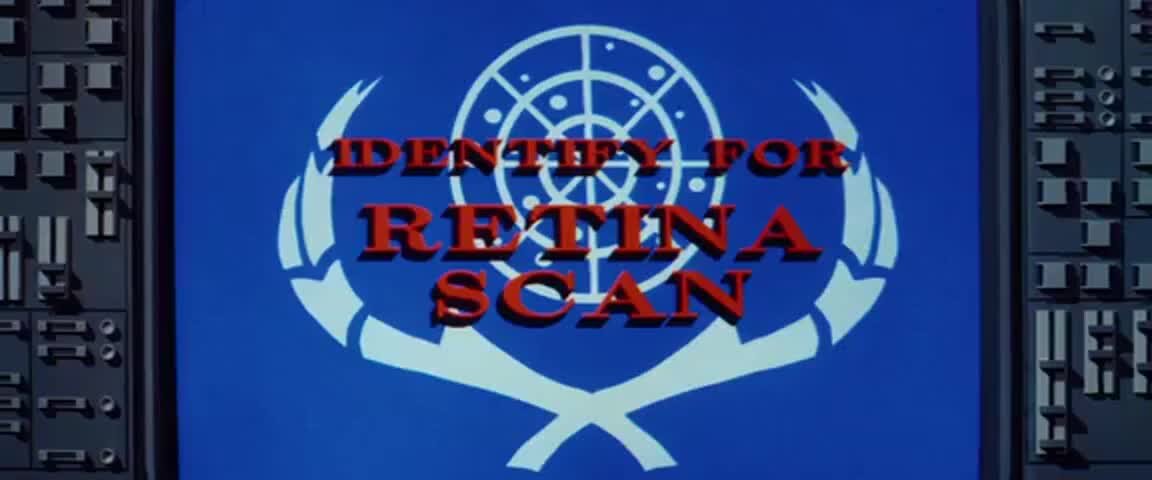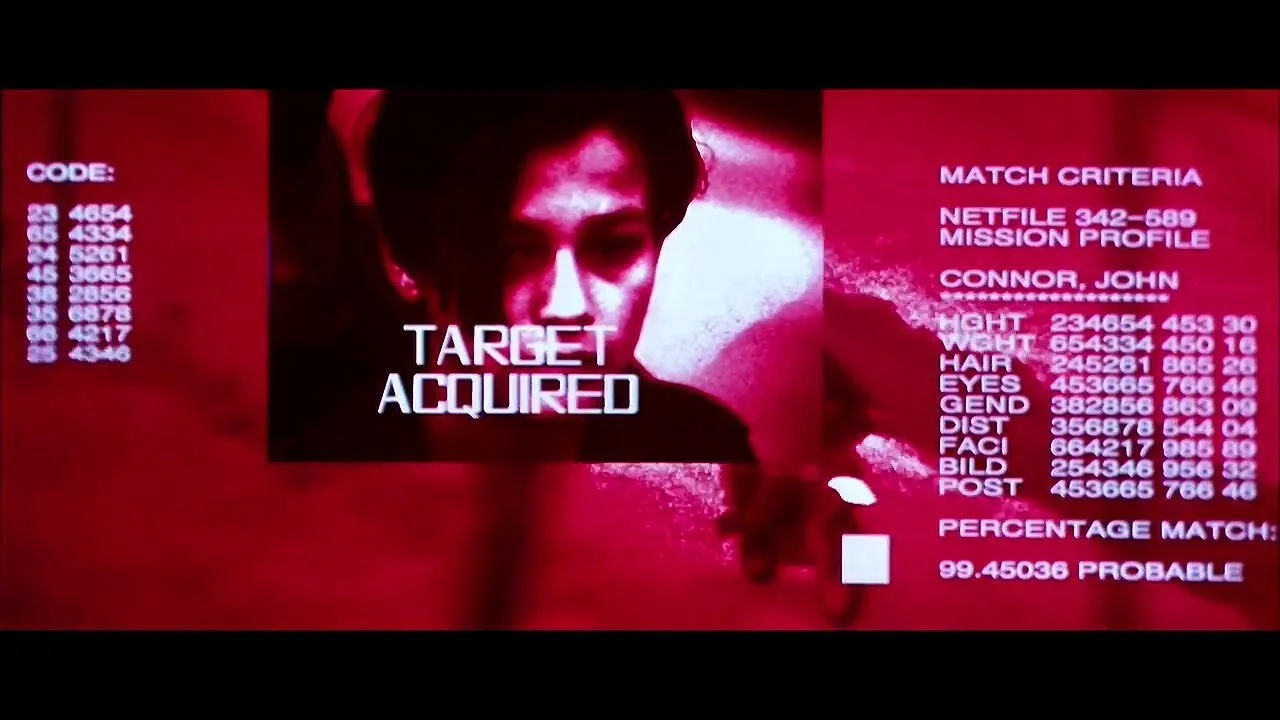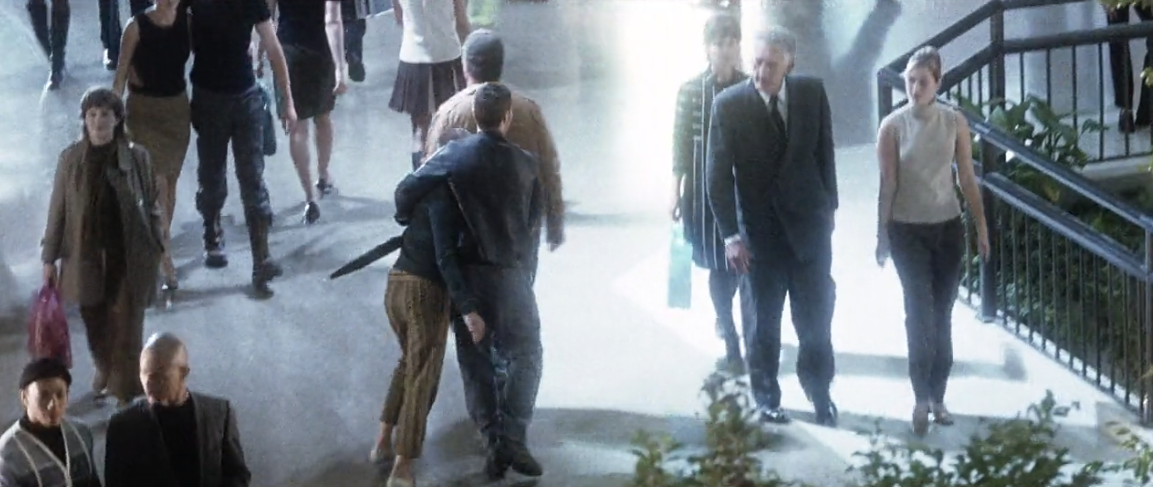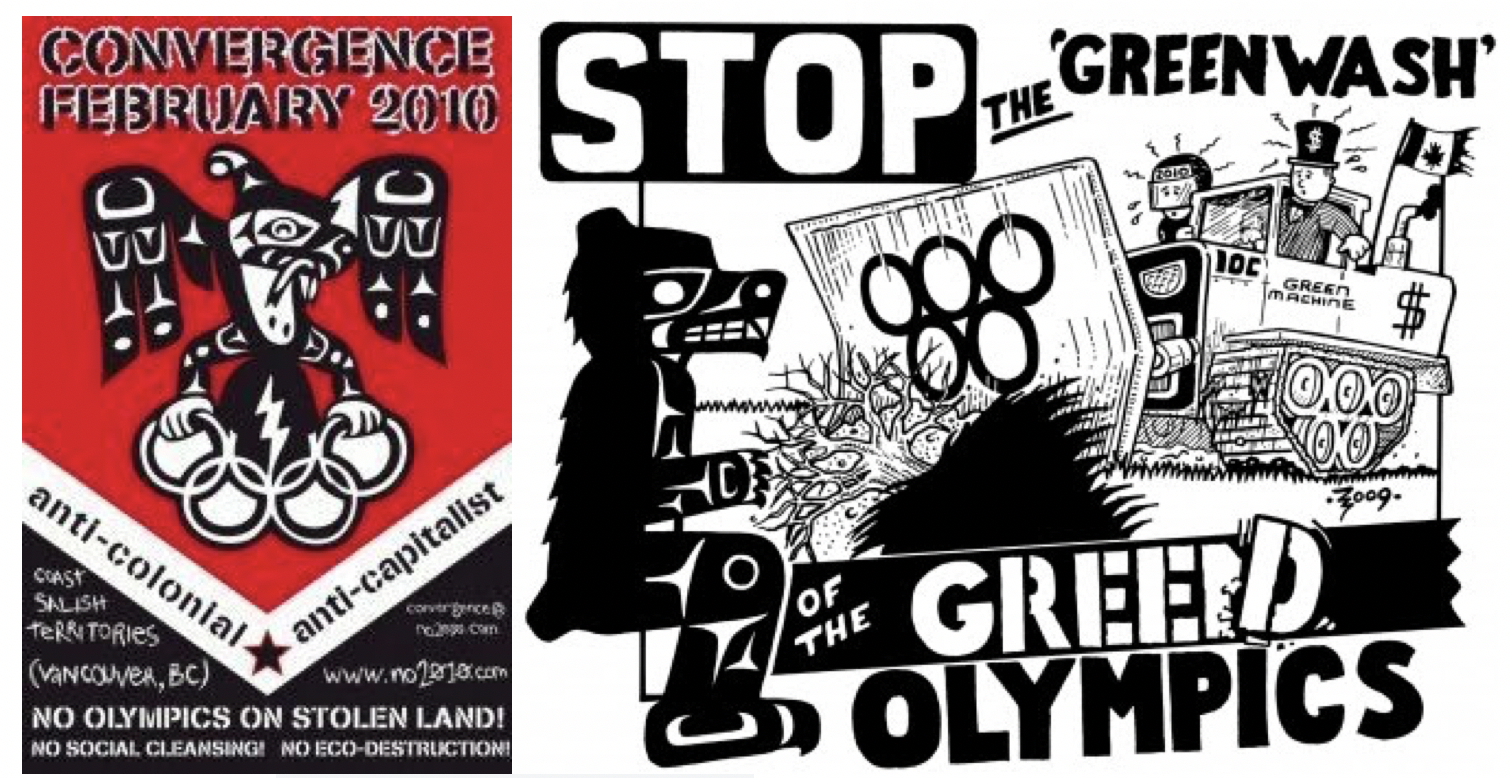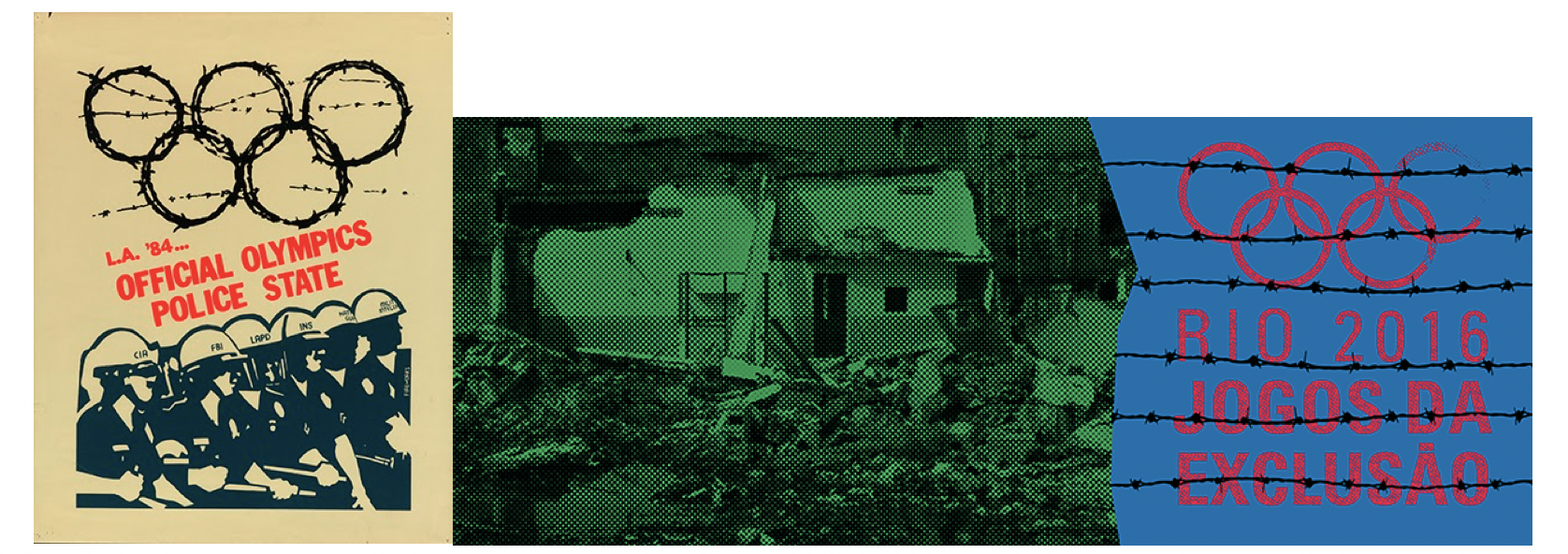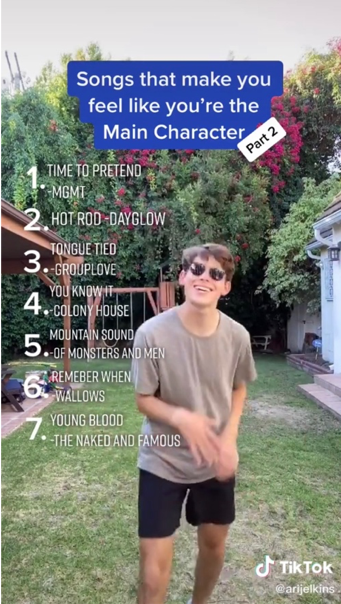Back to School: Science Fiction as Media Theory
/This term, I am spending much of my time focused on speculative fiction. In part, this is because the work I have been doing on the Civic Imagination has left me working through core concepts from the realm of speculative fiction — especially the ways world-building has taken on a bigger role in social change movements but also because as we start to imagine life after the pandemic, a focus on alternative futures seems more urgent than ever. I have returned to a course I have only taught once before — Science Fiction as Media Theory — which encourages students to think creatively about the work theory does, who does theory, and how it operates in different contexts. While there are other versions of the class out there, I have updated it so much since 2011 when I taught it last that I thought it was worth sharing again. For those of you who are interested in the thinking behind the class, I recently published a piece demonstrating its underlying assumptions through an analysis of The Space Merchants, a classic SF novel dealing with the future of advertising Otherwise, without much more fanfare, here’s the syllabus.
COMM 620: Science Fiction as Media Theory
4 units
Fall 2020 – Tuesdays – 12:30-3:20 p.m.
Section:20900D
Location: https://blackboard.usc.edu/
Instructor: Henry Jenkins
Office:ASC-101C
Office Hours: Virtual office hours by appointment. Contact assistant. (Info below.)
Contact Info: hjenkins@usc.edu
Assistant: Amanda Ford
Contact Info: amandafo@usc.edu
Course Description
This class explores the ways that science fiction—sometimes known as speculative fiction—has historically functioned as a form of vernacular theory about media technologies, practices, and institutions. As recent writings about "design fictions" illustrate, these speculations have, in turn, inspired the developers of new technologies, as well as those who create content for such platforms, helping to frame our expectations about the nature of media change. And, increasingly, media theorists—raised in a culture where science fiction has been a pervasive influence—are drawing on its metaphors as they speculate about virtual worlds, cyborg feminism, post-humanism, and afro-futurism, among a range of other topics.
This seminar will explore the multiple intersections between science fiction and media theory, reading literary and filmic fictions as theoretical speculations and classic and contemporary theory as forms of science fiction. The scope of the course ranges from technological Utopian writers from the early 20th century to contemporary imaginings of digital futures and steampunk pasts. Not simply a course on science fiction as a genre, this seminar will invite us to explore what kinds of cultural work science fiction performs and how it has contributed to larger debates about communication and culture.
Student Learning Outcomes
By the end of the course, students will be able to:
· describe the historic relationship between speculative fiction and media theory.
· explain key movements in science fiction (such as technological utopianism, cyberpunk, steampunk) and discuss their relationship to larger theories of media change.
· trace the roots of contemporary media theories of cyborg feminism, afrofuturism, and trans/post-humanism back through science fiction films and literature.
· develop their own critical account of how ideas about media and technology have been shaped by the discourses associated with science fiction.
Required Readings and Supplementary Materials
· Ray Bradbury, Fahrenheit 451
· Frederik Pohl and Cyril M. Kornbluth, The Space Merchants
· Pat Cadigan, Mindplayers
· Paolo Bacigalupi, The Windup Girl
· One of the following:
o Octavia Butler’s Parable of the Sower, original novel, Audible audiobook, or Damian Duffy and John Jennings, Octavia Butler’s Parable of the Sower: A Graphic NovelAdaptation
o Walidah Imarisha, adrienne maree brown, et al. Octavia’s Brood: Science Fiction Stories from Social Justice Movements
o Charlie Jane Anders, Lesley Nneka Arimah, et al., The People’ s Future of the United States
o Cory Doctorow, Radicalized. Available for $3 as ebook at https://craphound.com/category/radicalized-full/
All else is on Blackboard.
Description and Assessment of Assignments & Assignment Submission Policy
All assignments (except for Blackboard posts) should be submitted via email to the instructor by 5 p.m. on the due date.
1. Blackboard Posts: Each week, students will post a reaction to the readings via the class Blackboard site. The reaction might be a comment, a question, or a provocation, and often will be a complex mixture of all of the above. It can be informal and need not be more than a few paragraphs, but it should show the student's thinking process in response to the topics and materials being encountered that week. This is the primary mechanism by which I will be monitoring your mastery of the core concepts of the class. You need not respond to every reading each week, but there should be signs of close reading and critical engagement. (30%)
2. Media Analysis Paper: Applying the concepts of science fiction as a "design platform" that we will encounter in the first class session, students will choose a film, television series, or game which they feel offers a particularly vivid embodiment of a science fiction concept and provide an analysis which considers the thinking behind this representation of future media or technology, the ways this concept gets deployed through the story and the values which become associated with it, and how this concept may be deployed as a springboard for creative thinking about the development of future media tools, platforms, or processes. Along the way, students might consider the differences between embodying these concepts in an audio-visual media as opposed to the ways they might be dealt with in a literary text. The result should be a short but impactful essay (roughly 5-7 pages). (20%)
3. Theory Analysis Paper:A key theme in our discussions is the idea that science fiction functions much like theory, to speculate about the implications of current social, economic, political, cultural, or technological practices and to envision potential outcomes of current trends. In this paper, students will reverse their lens and examine theory as a form of speculative fiction. Students will select a work of media theory and discuss what they see as its vision for the future (whether implicit or explicit). What does it have to say about the nature of media change? Does it see people as moving towards a utopian or dystopian future? What, if any, explicit use does it make of metaphors drawn from science fiction as it constructs its vision for the future? What kinds of response does it seek from its readers to the problems or potentials that it has identified? Students shall produce a short, impactful essay (5-7 pages) which demonstrates close reading of the theoretical text and an ability to push analysis beyond what's explicitly on the page. (20%)
4. Final Paper: Students, in consultation with the professor, will develop a distinctive project which emerges from the intersection between their research interests and the course content. The result can either be a creative project or a paper, though either should show the ability to construct an argument and mobilize evidence in support of their core claims and should show a grasp of the basic conceptual framework of the course. Students will be asked to give a short class presentation, sharing their project and its implications with their classmates, as part of the process of developing and refining their ideas. (30%)
5. Participation: Students are expected to come to class prepared and ready to participate in discussions around these materials. On most days, we have one or more guest speaker, so it is especially important to bring questions to gain maximum benefit from their experiences and expertise.
Each activity here builds on the previous ones, so it is important to meet deadlines in the class.
Unless specified otherwise, I expect to fill the designated class period with a mix of discussions, activities, and guest visitors, so students should plan, under normal circumstances, to stay for the class period.
Breakdown of Grade
· Blackboard Posts (30%)
· Media Analysis Paper (20%)
· Theory Analysis Paper (20%)
· Final Paper (30%)
Course Schedule: A Weekly Breakdown
Important note to students:Be advised that this syllabus is subject to change—and probably will change—based on the progress of the class, events, and/or guest speaker availability, where relevant. Students should consult the Registration Calendar for dates regarding add/drop deadlines, fees, grading options, etc.
TUESDAY, JANUARY19TH
Week 1: Science Fiction as Design Fiction
· Students will watch Minority Reportprior to the first class session.
· Brian David Johnson, excerpt from Science Fiction Prototyping: Designing the Future with Science Fiction (Morgan and Claypool, 2011), pp.9-32.
· Philip K. Dick, "The Minority Report," Selected Stories of Philip K. Dick (New York: Random House, 2002), pp. 227-264.
· Bruce Sterling, "Design Fiction," Interactions 16(3), May-June 2009, pp. 20-24.
· Ann Pendleton-Julian and John Seeley Brown, excerpt from Design Unbound(Cambridge: MIT Press, 2018).
· The Ezra Klein Show, “I Build a World with Fantasy Master N. K. Jemison.”
TUESDAY, JANUARY 26TH
Week Two: Technological Utopianism
· Howard P. Segal, "The Vocabulary of Technological Utopianism" and "American Visions of Technological Utopia," Technological Utopianism in American Culture(Syracuse, NY: Syracuse University Press, 2005), pp. 10-44.
· Edward Bellamy, excerpt from Looking Backward, Chapter 1-12, pp. 3-72.
· Katharine Burdekin, excerpt from Proud Man13-62.
· W. E. B. Dubois, “The Comet” (1920).
· José Vasconcelos, “The Cosmic Race” (1925).
· (Reccomended) Alexis Lothian, “Dystopian Impulses, Feminist Negativity, and The Fascism of the Baby’s Face,” Old Futures: Speculative Fiction and Queer Possibility(New York: New York University Press, 2018), pp. 57-87
·
TUESDAY, FEBRUARY 2ND
Week Three: The Origins of Science Fiction
· Andrew Ross, "Getting Out of the Gernsbeck Continuum," Strange Weather: Culture, Science and Technology in the Age of Limits(London: Verso, 1991), pp. 100-135
· John W. Campbell, "Twilight" (pp. 40-63); Lester del Rey, "Helen O'Loy" (pp. 62-73); Theodore Sturgeon, "Microscopic God" (pp. 115-142); and Clifford Simak, “Huddling Place” (pp. 261-280) in Robert Silverberg (ed.), Science Fiction Hall of Fame, Vol. 1, (New York, NY: Orb Books, 2005).
· Vannevar Bush, "As We May Think" (pp. 35-48); Alan Turing, "Computing Machinery and Intelligence" (pp. 49-64); Nobert Wiener, and "Men, Machines, and the World About" (pp. 65-72), in Noah Wardrip-Fruin and Nick Montfort (ed.), The New Media Reader(Cambridge, MA: MIT Press, 2003).
TUESDAY, FEBRUARY 9TH
Week Four: Postwar Dystopias
· George Orwell, "Politics and the English Language."
· George Orwell, 1984, Chapter One.
· Aldous Huxley, Brave New World, pp. 1-44, 117-131.
· Ray Bradbury, Fahrenheit 451.
TUESDAY, FEBRUARY 16TH
Week Five: The Space Merchants and American Advertising
· Vance Packard, excerpt from The Hidden Persuaders(New York: Ig, 2007), pp. 31-64.
· Jules Henry, "Advertising as a Philosophical System," Culture Against Man(New York: Vintage, 1965), pp. 45-99.
· Frederik Pohl and Cyril M. Kornbluth, The Space Merchants(New York: St. Martins, 1958).
· Frederik Pohl, "Tunnel Under the World" (pp. 1-34) and "Happy Birthday, Baby Jesus" (pp. 62-85), The Best of Frederik Pohl(New York: Sidgewick and Johnson, 1977).
· Henry Kuttner, “All Mimsy Were the Borogroves,” "The Twonky," The Best of Henry Kutner(New York: Ballantine, 1975), pp. 167-189.
TUESDAY, FEBRUARY 23TH
Week Six: Cordwainer Smith and Psychological Warfare
· Paul M.A. Linebarger, excerpt from Psychological Warfare(New York: Duell, Sloan and Pearce, 1948), pp. 43-92.
· Cordwainer Smith, "Scanners Live in Vain" (pp. 65-95); "The Dead Lady of Clown Town" (pp. 223-286); "The Ballad of Lost C'Mell" (pp. 401-417); "A Planet Named Shayol" (pp. 419-448, The Rediscovery of Man: The Complete Short Science Fiction of Cordwainer Smith(Boston: Boston Science Fiction Association, 1993).
TUESDAY, MARCH 2ND
Week Seven: Altered States
· Alvin Toffler, "Diversity," Future Shock(New York: Bantam, 1984), pp. 283-322.
· Betty Friedan, "The Problem That Has No Name" (pp. 57-78) and "The Crisis in Women's Identity," The Feminine Mystique(New York: W. W. Norton and Company, 2001), pp.123-136.
· James Tiptree Jr., "The Women Men Don't See," in Brian Atteby and Ursula K. Le Guin (eds.), The Norton Book of Science Fiction(New York: W.W. Norton, 1997), pp. 255-279.
· Pamela Zoline, "Heat Death of the Universe," in Pamela Sargent (ed.), The New Women of Wonder(New York: Vintage, 1978), pp. 100-119.
· Kate Wilhelm, "Baby, You Were Great," in Pamela Sargent (ed.), Women of Wonder (New York: Vintage, 1974), pp. 139-158.
· Imaginary Worlds: The Mysterious James Tiptree.
TUESDAY, MARCH 9TH
Week Eight: Cyberpunk
· Bruce Sterling, "Preface" (pp. XX); James Patrick Kelly, "Solstice;" (pp. 66-104); Bruce Sterling and Lewis Shiner, "Mozart in Mirrorshades" (pp. 223-239); and John Shirley, "Freezone;" (pp. 139- 177), in Bruce Sterling (ed.), Mirrorshades: A Cyberpunk Anthology(Berkeley, CA: Ace Books, 1988).
· William Gibson, "Johnny Mnemonic," Burning Chrome(New York: Ace, 1986), pp.1-22.
· Samuel R. Delaney, "Some Real Mothers: An Interview with Samuel R. Delaney," in Silent Interviews(Middletown, CT: Wesleyan University Press, 1994), pp. 164-185.
TUESDAY, MARCH 16TH
Week Nine: Cyborg Feminism
· Anne Balsamo, "Signal to Noise: On the Meaning of Cyberpunk Subculture," in Frank Biocca and Mark R. Levy (eds.),Communication in the Age of Virtual Reality(New York, NY: Routledge, 1995), pp. 347-368.
· N. Katherine Hayles, "Towards Embodied Virtuality," in How We Became Posthuman: Virtual Bodies in Cybernetics, Literature, and Informatics(Chicago, IL: University of Chicago Press, 1999), pp. 1-24.
· Ray Kurzweil, "The Six Epochs" (pp.7-34) and "Eich bin ein Singularitarian" (pp. 369-390), The Singularity is Near: When Humans Transcend Biology, (London, England: Penguin, 2006), pp. 7-34.
· C.L. Moore, "No Woman Born," in Mary Flanagan and Austin Booth (eds.), Reload: Rethinking Women and Cyberculture(Cambridge: MIT Press, 2002), pp. 261-300.
· Pat Cadigan, Mindplayers(Orion, 2000).
· Aja Romano, “Janelle Monae’s Body of Work Is A Masterpiece of Modern Science Fiction,” Vox, May 16 2018.
· Donna Harroway, "Cyborgs at Large," in Constance Penley and Andrew Ross (eds.), Technoculture(Minneapolis, MN: University of Minnesota Press, 1991), pp. 1-20.
TUESDAY, MARCH 23RD
Week Ten: Wellness Day
TUESDAY, MARCH 30TH
Week Eleven: Steampunk and Ecofuturism
· Rebecca Onion, "Reclaiming the Machine: An Introductory Look at Steampunk in Everyday Practice," Neo-Victorian Studies1(1), Autumn 2008, pp. 138-163.
· Naomi Klein, excerpt from No Is Not Enough: Resisting Trump’s Shock Politics and Winning the World We Need (Boston: Haymarket, 2017[MOU1] ).
· “A Message from the Future With Alexandria Ocasio-Cortez,” The Intercept, April 17, 2019.
· Imaginary Worlds, “Solarpunk The Future.”
· Paolo Bacigalupi, The Windup Girl (Night Shade Books, 2009).
Guest Speaker:Ed Finn, Director, Center for Science and the Imagination, Arizona State University
TUESDAY, APRIL 6TH
Week Twelve: Octavia Butler and Her Legacy
· Alex Zamalin, “Octavia Butler and the Politics of Utopian Transcendence,” Black Utopia: The History of an Idea from Black Nationalism to Afrofuturism(New York: Columbia University Press, 2019), 123-136.
· Engage with Parable of the Sowerthrough one of the following:
o Octavia Butler’s original novel
o Audible audiobook
o Damian Duffy and John Jennings, Octavia Butler’s Parable of the Sower: A Graphic NovelAdaptation (Seattle: Abrams, 2019).
· Octavia Butler, “The Evening and The Morning and the Night.”
· Sami Schalk, “Interpreting Disability Metaphor and Race in Octavia Butler’s ‘The Evening and the Morning and the Night’,” African American Review50(2), 2017, pp. 139-151. (Project MUSE, doi:10.1353/afa.2017.0018)
TUESDAY, APRIL 13TH
Week Thirteen: Afrofuturism and Global Science Fiction
· Alondra Nelson, “’Making the Impossible Possible’: An Interview with Nalo Hopkinson,” Social Text20(2), 2002, pp. 97-113.
· Elizabeth C. Hamilton, “Afrofuturism and the Technologies of Survival,” African Arts50(4), Winter 2017, pp. 18-23.
· Suzanne Newman Fricke, “Indigenous Futurisms in the Hyperpresent Now,” World Art 9(2), 2019, pp. 107-121.
· Alexis Pauline Gumba, “Evidence” (pp. 33-42)[MOU2] ; Walidah Imarisha, “Black Angel” (pp. 43-56); Morgann Philips, “The Long Memory” (pp. 57-78); Mia Mingel, “Hollow” (pp.109-122) Autumn Brown, Small and Bright” (pp. pp.79-880; Gabriel Teodros, “Lalibela” (pp. 123-134), and Adrienne Marie Brown, “Outro,” (pp. 279-282 in Adriene Marie Brown and Walidah Imarisha (eds.), Octavia’s Brood: Science Fiction Stories from Social Justice Movements(New York: AK Press, 2015).
TUESDAY, APRIL 20TH
Week Fourteen: Science Fiction and Social Change
· A. Merc Rustad, “Our Aim Is Not To Die” (pp. 27-47); Malka Older, “Disruption and Continuity” (pp. 84-92) Ashok K. Baker, “By His Boostraps” (pp. 133-144); N. K. Jemison, “Give Me Cornbread or Give Me Death” (pp. 298-306); Charles Yu, “Good News, Bad News” (pp. 307-320), in Victor Lavalle and John Joseph Adams (eds.), A People’s Future of the United States (New York: One World, 2019).
· Cory Doctorow, “Model Minority,” Radicalized: Four Tales for Our Present(New York: Tor, 2020), pp. 111-180.
· Mariabe Kambe, “Justice,” in Alexandria Brodsky and Rachel Kauder Nalebuff (eds.) The Feminist Utopia Project: Fifty-Seven Versions of a Wildly Better World(New York: The Feminist Press at CUNY, 2015), pp. X
· Curtis Marez, “Farm Worker Futurism Today,” Farm Worker Futurism: Speculative Technologies of Resistance(Minneapolis: University of Minnesota Press, 2016), pp. 155-182.
TUESDAY, APRIL 27TH
Week Fifteen: Student Presentations


